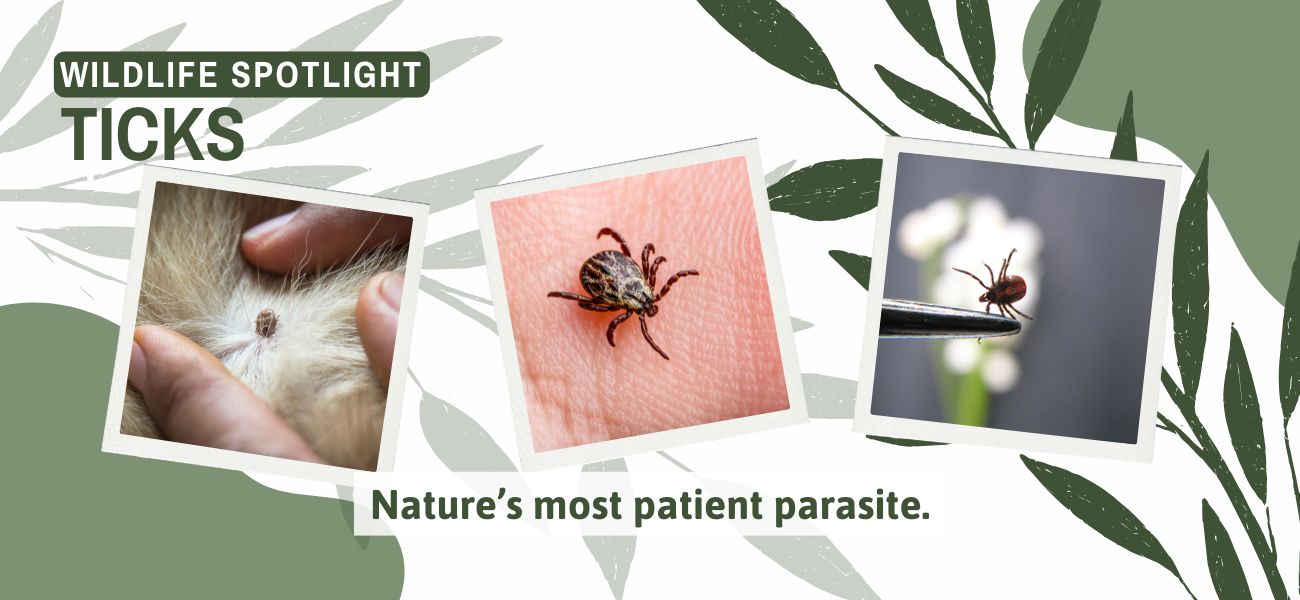Wildlife Spotlight: Ticks
Ticks aren’t fast. They don’t fly. They don’t even chase their prey.
And yet — they’re among the most successful parasites in the animal kingdom.
What they lack in speed, they make up for in strategy. Ticks are highly specialized arachnids that rely on stealth, persistence, and incredibly fine-tuned instincts to find and feed on hosts — including people, pets, and wildlife.
Let’s take a closer look.
Anatomy & Movement
Despite their tiny size, ticks are complex creatures. They have:
8 legs, like spiders and scorpions
A specialized mouthpart called a hypostome used to pierce skin and anchor in place
A hard outer shell that expands as they feed
No wings, no jumping ability, and very limited vision
Instead of chasing hosts, they wait and detect carbon dioxide, body heat, and movement to locate their next meal.
The “Questing” Strategy
Ticks don’t hunt in the traditional sense. They engage in a behavior called questing:
They climb to the tip of a blade of grass, stick out their front legs, and wait.
When a host brushes past, they latch on.
Once attached, they crawl to a preferred feeding spot (often behind ears, in armpits, or under collars) and begin to feed — sometimes for days.
This strategy lets them stay hidden and avoid detection until well after a bite has occurred.
Life Cycle: One Host Isn’t Enough
Most ticks go through four stages in their life:
Egg
Larva (6 legs)
Nymph (8 legs, very small)
Adult
Each stage requires a blood meal to move to the next. That means a single tick may feed on a rodent as a larva, a raccoon as a nymph, and a dog or human as an adult — picking up pathogens along the way and transmitting them later.
What Makes Ticks Unique
Ticks can survive for months (or even over a year) between meals.
Some species can transmit multiple diseases with a single bite.
Their saliva contains anesthetics, so most bites go unnoticed until much later.
A fully fed adult female can grow to several times her original size and lay up to 5,000 eggs.
Why It Matters
Understanding ticks is the first step in avoiding them. Their slow, stealthy behavior makes them easy to miss — but their impact can be serious.
Ticks do serve a purpose in natural ecosystems, especially in their early stages, as food for birds and reptiles. But once they make their way into suburban yards or onto household pets, they become a public health risk.
Paragon Pest Control helps reduce tick activity by treating the areas they love most — shaded brush, fence lines, woodpiles, and undergrowth.
Understanding their biology is important. But taking action is even better.


